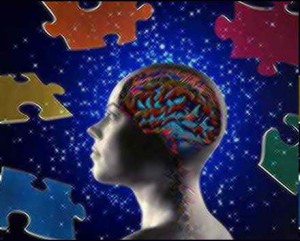 A recent meta-analysis indicated that among individuals diagnosed with cancer, 14.9% meet criteria for Major Depressive Disorder, 19.2% experience minor depression, and 2.7% meet criteria for Dysthymia (Mitchell et al., 2011). The occurrence of depression in oncology may lead to increased mortality rates, higher treatment attrition, and decreased quality of life (Spiegal & Giese-Davis, 2003; Pinquart & Duberstein, 2010). Continue reading
A recent meta-analysis indicated that among individuals diagnosed with cancer, 14.9% meet criteria for Major Depressive Disorder, 19.2% experience minor depression, and 2.7% meet criteria for Dysthymia (Mitchell et al., 2011). The occurrence of depression in oncology may lead to increased mortality rates, higher treatment attrition, and decreased quality of life (Spiegal & Giese-Davis, 2003; Pinquart & Duberstein, 2010). Continue reading
Author Archives: Mary
An Examination of Residential Status and Educational Satisfaction
 Educational satisfaction is thought to be an influential factor in career success and future educational achievement (Elliott & Healy, 2001). Many studies have evaluated the differences between commuter and residential students, often citing the advantages residential students have over commuter students (Bowman & Partin, 1993). Continue reading
Educational satisfaction is thought to be an influential factor in career success and future educational achievement (Elliott & Healy, 2001). Many studies have evaluated the differences between commuter and residential students, often citing the advantages residential students have over commuter students (Bowman & Partin, 1993). Continue reading
Avoidance and Approach Behaviors in Schizotypy and Hypomania
 The motivation to engage in avoidance and approach behaviors appear to involve specialized brain processes (Gray,1982).
The motivation to engage in avoidance and approach behaviors appear to involve specialized brain processes (Gray,1982).
The Behavioral Inhibition System (BIS) is associated with the avoidance of aversive stimulus, whereas the Behavioral Activation System (BAS) is linked to the reward system and the pursuit of positive stimuli (Carver & White, 1994). Continue reading
Lateralized Asymmetrical Processing During Visual Change Detection
 The lateralization of visual processing between the hemispheres is a paradigm commonly applied to hierarchical visual image processing (Hellige, 1996). In fact, lesions to the temporal-parietal left hemisphere have been noted to disrupt local-level (i.e. fine detail) processing, while lesions to the temporal-parietal area of the right hemisphere have caused deficits in global- Continue reading
The lateralization of visual processing between the hemispheres is a paradigm commonly applied to hierarchical visual image processing (Hellige, 1996). In fact, lesions to the temporal-parietal left hemisphere have been noted to disrupt local-level (i.e. fine detail) processing, while lesions to the temporal-parietal area of the right hemisphere have caused deficits in global- Continue reading
What is Private?
 Private is difficult to give to the procedure of recurrence and addiction. According to Aristotle, common places like linguistic and logical figures are extraordinarily important, it is the invisible skeleton of any speech. However, we see only “private places” – metaphors, witty answers, specific expressions that correspond to a certain sphere of life. Continue reading
Private is difficult to give to the procedure of recurrence and addiction. According to Aristotle, common places like linguistic and logical figures are extraordinarily important, it is the invisible skeleton of any speech. However, we see only “private places” – metaphors, witty answers, specific expressions that correspond to a certain sphere of life. Continue reading
Racial Differences among Undergraduate Students in Psychiatric Correlates of Self-Aggression
 There’s a well-established relationship between depression, anxiety, emotion dysregulation and aggression, in the form of self harm. These populations have predominately been Caucasian. This study aimed to characterize selfinjurious thoughts and behaviors, and to correlate / compare these statistics between African American and Caucasian samples. Continue reading
There’s a well-established relationship between depression, anxiety, emotion dysregulation and aggression, in the form of self harm. These populations have predominately been Caucasian. This study aimed to characterize selfinjurious thoughts and behaviors, and to correlate / compare these statistics between African American and Caucasian samples. Continue reading
Language & Logic (abstracts)
 Outline of a Game Theoretical Approach of Semantic Normativity
Outline of a Game Theoretical Approach of Semantic Normativity
Saul Kripke‘s famous but controversial interpretation of Wittgenstein‘s rule-following considerations ignited an ongoing debate on the normativity of meaning. The idea that meaning has a normative, action-guiding component, i.e. that the meaning of a word Continue reading
Does Sexual Risk Among Girls with a History of Dating Violence Vary According to Childhood Maltreatment?
 Childhood maltreatment (CM) is associated with risky sexual behavior (RSB) in adolescence Negriff et al., 2015). Little is known about the association between types of CM and RSB among adolescent girls with a history of dating violence (DV). We examined whether RSB differed according to five types of CM for 109 girls (age 14-17) from a randomized controlled trial of an indicated DV prevention intervention. Continue reading
Childhood maltreatment (CM) is associated with risky sexual behavior (RSB) in adolescence Negriff et al., 2015). Little is known about the association between types of CM and RSB among adolescent girls with a history of dating violence (DV). We examined whether RSB differed according to five types of CM for 109 girls (age 14-17) from a randomized controlled trial of an indicated DV prevention intervention. Continue reading
Romantic Relational Styles, Mental Health and Cyber Abuse
 Nearly 26% of adolescents report experiencing cyber dating violence (DV; Zweig, Lachman, Yahner, & Dank, 2014). Previous studies indicate that both romantic relational styles and impaired mental health (MH) functioning are potential risk factors for DV (Furman & Wehner, 1994; Zweig et al., 2014). Individuals with avoidant and anxious relational styles are more likely to be victims and perpetrators of DV. Continue reading
Nearly 26% of adolescents report experiencing cyber dating violence (DV; Zweig, Lachman, Yahner, & Dank, 2014). Previous studies indicate that both romantic relational styles and impaired mental health (MH) functioning are potential risk factors for DV (Furman & Wehner, 1994; Zweig et al., 2014). Individuals with avoidant and anxious relational styles are more likely to be victims and perpetrators of DV. Continue reading
Intimate Partner Violence and its Impact on the Rowan University Community
 Intimate partner violence (IPV) is best defined as “physical violence, sexual violence, stalking, and psychological aggression (including coercive acts) by a current or former intimate partner.” Previous literature has established that young adults are more susceptible to IPV than the general population due to many social and societal pressures surrounding their environments. Continue reading
Intimate partner violence (IPV) is best defined as “physical violence, sexual violence, stalking, and psychological aggression (including coercive acts) by a current or former intimate partner.” Previous literature has established that young adults are more susceptible to IPV than the general population due to many social and societal pressures surrounding their environments. Continue reading
